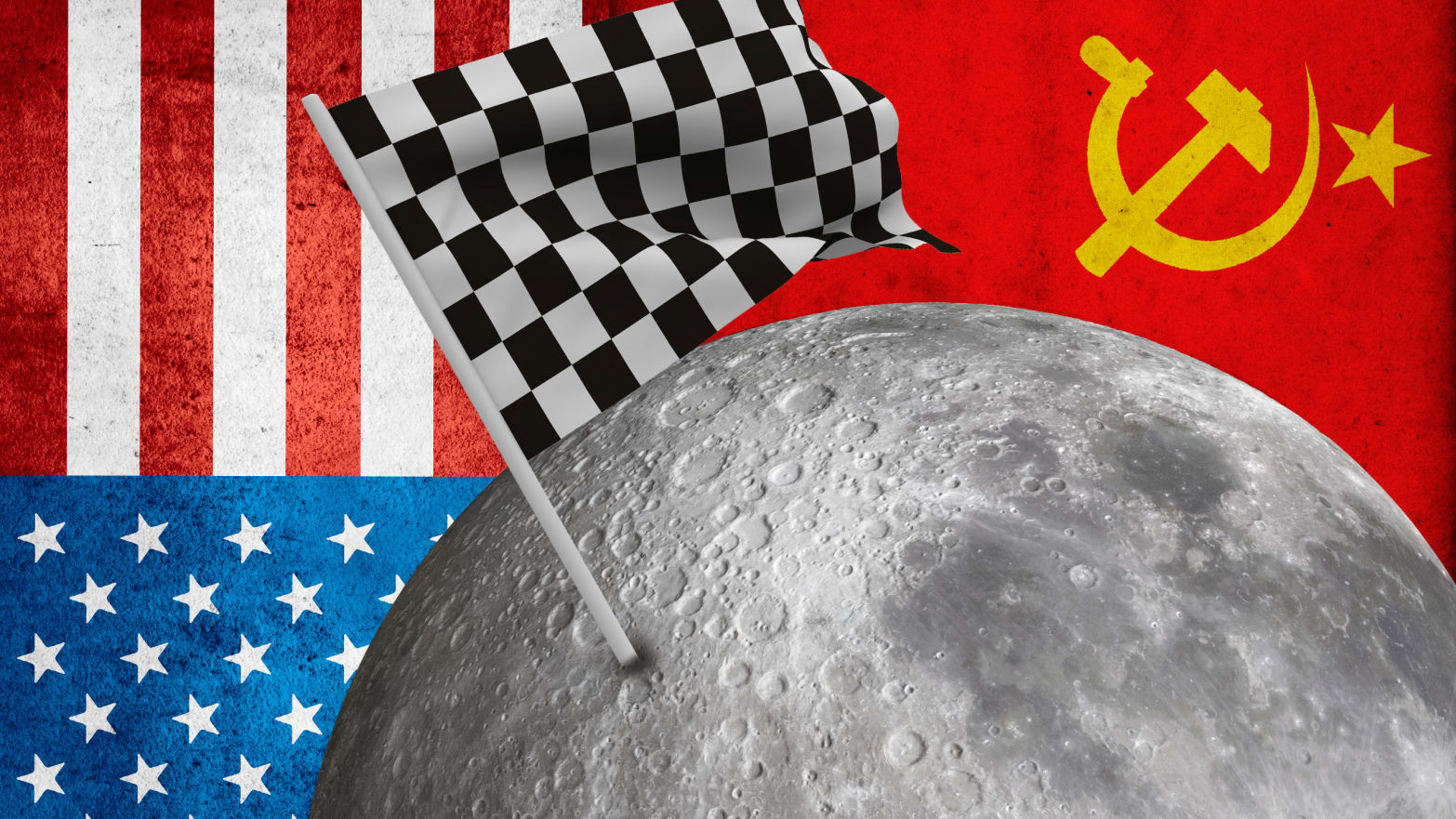
American hegemony is challenged by an agreement between its two main rivals.
On March 9, the Russian space agency Roscosmos and the China National Space Administration announced in a memorandum of agreement that they will cooperate to build a base on the surface of the moon, in its orbit or both. This joint undertaking appears as a new political, technological and economic challenge for the United States, a country that aims not only at being the first to take a woman to the moon by 2024, but also at establishing a permanent base on the lunar south pole. The news of the cooperation between Russia and China has triggered a new space race, and the superpowers are once again pushing to establish their supremacy beyond the boundaries of Earth.
An Agreement between Space Powers
The agreement, signed by Roscosmos and CNSA directors Dmitri Rogozin and Zahgn Kejian, has the objective of promoting cooperation for the creation of an International Scientific Lunar Station. Although this station will be built initially by Russia and China, their plan is to incorporate further nations and investors, and the agreement is open to all interested countries and international parties. Regarding the base’s characteristics, Roscosmos stated that the International Scientific Lunar Station will be a complex of experimental facilities built on the Moon’s surface and/or orbit. Of course, it is too early to be sure of anything, but if it were built on the surface, it would probably be on the south pole. This is due to information presented by several space agencies suggesting the presence of frozen water inside craters located in permanent shadow in that area of the Moon.
With the Chang’e 5 mission in early 2021, China ended the third phase of its lunar exploration program and started its ambitious fourth phase, which aims at studying the Moon’s south pole, just like the U.S., for future manned expeditions. By 2024, Chang’e 6 will land close to the south pole to take surface samples and bring them back to Earth. After that, Chang’e 7 will carry a lunar rover and a mini-flying probe. Finally, Chang’e 8 will be the mission that will develop key technologies for mining the surface of the Moon and building the station with Russia.
On the other hand, Russia, the other party to the agreement and a pioneer of space exploration, aims to take back lost ground, since Russia’s space program has, in recent times, fallen behind those of the U.S. and China. Therefore, in 2021, Russia will launch the automatic interplanetary station Luna-25, the first Russian lunar station. If the mission succeeds, it will make the first soft lunar landing in the southern circumpolar region, near the Boguslawsky crater. Luna-25’s observation instruments will investigate the composition, structure and physical and mechanical properties of lunar regolith, lunar dust and the plasma exosphere found around the lunar south pole. By 2024, Russia plans to fly the satellite Luna-26 into orbit, which will create a 3D map of the lunar surface in order to determine the best place to carry out a manned mission, planned for 2031.
American Attempts To Maintain Hegemony
The agreement between Russia and China challenged America’s current project of lunar exploration, especially in the south pole. During Donald Trump’s term, the Artemis Program was created with the objective of landing the first woman and the next man on the Moon by 2024, but that will only be the first step in creating a permanent base on the lunar south pole. The program consists of three missions, from which Artemis III will be the one to take four astronauts to the Moon aboard the Orion module, which will be launched in the SLS rocket. After arriving at a stable orbit around the Moon, the Orion will couple with the Gateway. From there, two astronauts will land on the Moon with the Human Landing System module, while the other two remain on board the Gateway/Orion orbital complex. The astronauts will be on the Moon for six days, working with the help of a rover already present on the Moon from previous missions, doing scientific experiments and testing technologies. This will lay the groundwork for future missions that will end up with the creation of a permanent base, named Artemis.
Moreover, in late 2020, the U.S. created the Artemis Accords, which exclude Russia and China. This treaty, led by the U.S., was signed by Australia, Canada, Japan, Luxembourg, the United Arab Emirates and the United Kingdom. They are grounded in the Outer Space Treaty, signed by many countries in 1967. This treaty highlights the importance of peaceful exploration, the transparency of activities in order to prevent conflicts, the publication of scientific information, the preservation of human heritage (such as the Apollo mission site) and the harvesting of resources.
And this last point is important. The U.S. wants to use this new legal framework to be the leader of future mining operations, since the exploitation of the lunar soil and subsoil (including the water found at the poles) will become of utmost strategic importance. This is due not only to the fact that the Moon serves as a testing ground for future missions to Mars, but also to the belief that the Moon possesses an abundance of profitable mineral resources. Therefore, it comes as no surprise that, in the face of America’s attempt at regulating access to and control of such resources, Russia and China join forces to develop their own projects following their own rules. This is the beginning of a new era of incredible technological advancements. However, and perhaps unfortunately, these advancements will be determined by old rivalries.

Leave a Reply
You must be logged in to post a comment.